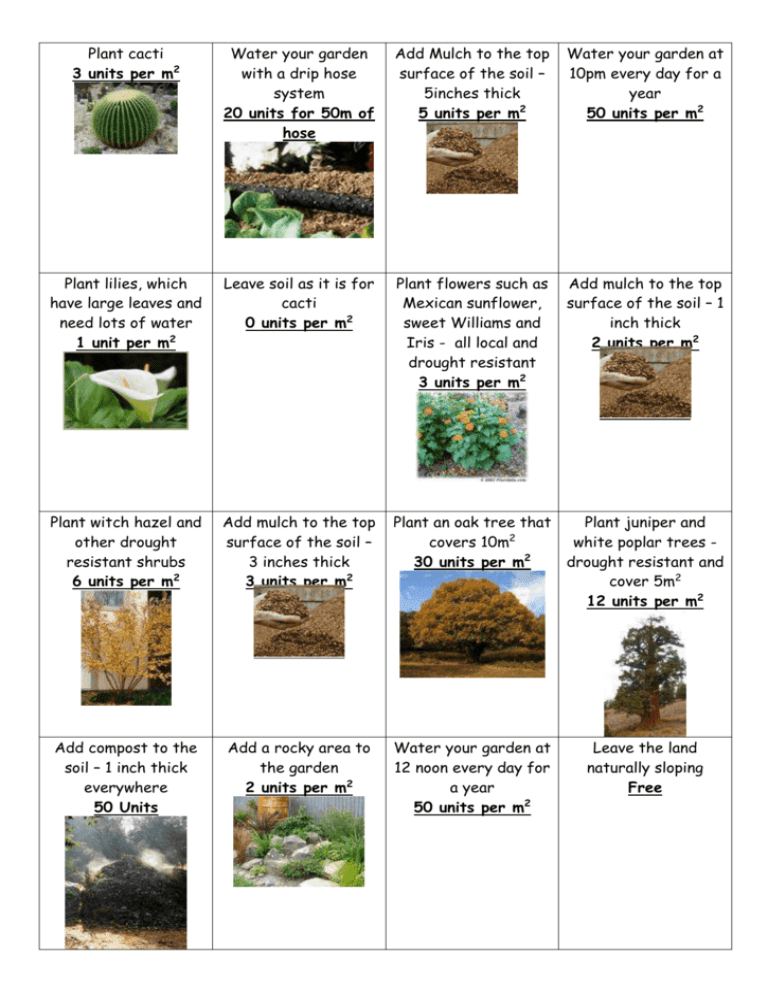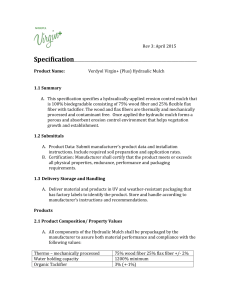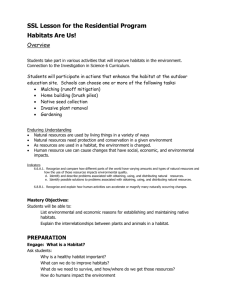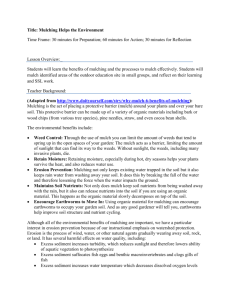options sheet - Coolgeography.co.uk
advertisement

Plant cacti 3 units per m2 Water your garden with a drip hose system 20 units for 50m of hose Add Mulch to the top surface of the soil – 5inches thick 5 units per m2 Water your garden at 10pm every day for a year 50 units per m2 Plant lilies, which have large leaves and need lots of water 1 unit per m2 Leave soil as it is for cacti 0 units per m2 Plant flowers such as Mexican sunflower, sweet Williams and Iris - all local and drought resistant 3 units per m2 Add mulch to the top surface of the soil – 1 inch thick 2 units per m2 Plant witch hazel and other drought resistant shrubs 6 units per m2 Add mulch to the top surface of the soil – 3 inches thick 3 units per m2 Plant an oak tree that Plant juniper and 2 covers 10m white poplar trees 2 30 units per m drought resistant and cover 5m2 12 units per m2 Add compost to the soil – 1 inch thick everywhere 50 Units Add a rocky area to the garden 2 units per m2 Water your garden at 12 noon every day for a year 50 units per m2 Leave the land naturally sloping Free Add terraces with walls to a slope to prevent soil loss and water loss 100 units Weeding once every three months 5 units Buy a sprinkler system to water the plants 10 units to cover 50m2 Plant drought resistant local grass 2 units per m2 Add compost to the soil – 3 inches thick 100 units Buy a water butt to collect water 5 units Plant British grass 1 unit per m2 Weeding once a month 2 units a month Buy some tarmac for the paths 50 units per 20m of path Buy a garden bench 5 units A guide to Xeriscaping Landscaping means to create a beautiful landscape (often a garden or park) using flowers and plants and ornamental furniture. Xeriscaping is exactly same – only it takes into account the fact that there is a shortage of water for the plants and animals of the environment. Indeed, Xeriscaping refers to the conservation of water through creative landscaping A xeriscaped garden There are several key ideas; Key idea or principle Conserve water Reasons why In hot dry areas there is a shortage of water, so reducing the amount of water added to a garden (irrigation) and reducing water loss to evaporation by the suns heat is key. Ways to xeriscape it! 1. 2. 3. 4. 5. Improve soils Create limited grass or turf areas Ideal soils in dry areas should drain rainwater quickly from the surface to reduce evaporation loss, and store the water in the soil for use by plants. 6. Grass areas die quickly in heat and dry conditions – so they are not good for Las Vegas! Reducing the amount of grassed areas could massively reduce the amount of water used in the city. 8. 9. 7. 10. 11. Use appropriate plants Plants in the Las Vegas area have adapted to the hot and dry conditions that exist there – foreign plants have not and may die without regular watering. 12. 13. Use mulch Irrigate responsibly Maintain the landscape Using mulch, such as leaves, coarse compost, pine needles, wood chips, bark or gravel. Mulch helps retain soil moisture and temperature, prevent erosion and block out competing weeds. This also fertilises the soil. Watering during the heat of the day loses loads of water – so water at night. Sprinklers also lose lots of water so use a hose that puts water to the base of the plant. Regular weeding gets rid of unwanted plants which could steal water from the plants you want 14. Look at the aspect of the garden – North facing slopes get less sun so lose less water, plants will do better here than on hotter south facing slopes. Look at shaded areas from trees and housing – these areas require less water than exposed areas Buy several water butts – these collect natural rainwater Water plants at the correct time of day Add terrace to the land which stop water flowing away over slopes Adding compost will improve the fertility and drainage of soils. Hardy drought resistant plants can survive in leaner desert soils. Keep turfed areas to a bare minimum. Locate the turf under shaded areas to reduce water losses. Plant only grass seeds that can survive under dry conditions Don’t have narrow plots of grass – sprinklers will miss large areas and this wastes water Use native local drought-resistant plants. In general, these plants have leaves which are small, thick, glossy, silver-grey or fuzzy - all characteristics which help them save water. Plant some trees which help to reduce evaporation by blocking wind and shading the soil Cover the soil's surface around plants with a mulch. To be effective, mulch needs to be several inches thick. There should be no areas of bare soil. 15. Use drip hoses that deliver water to the root of the plant. 16. Water deeply and irregularly 17. Weed regularly Source - http://www.eartheasy.com/grow_xeriscape.htm










